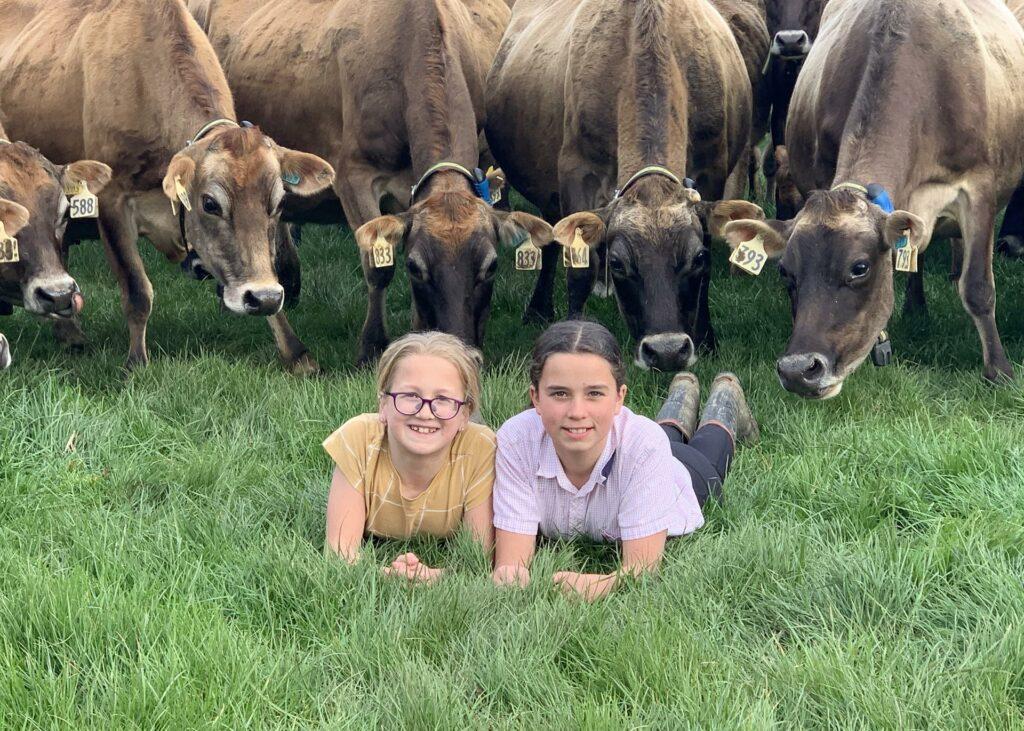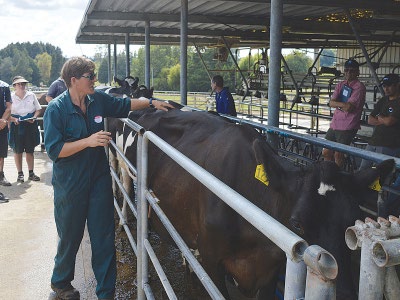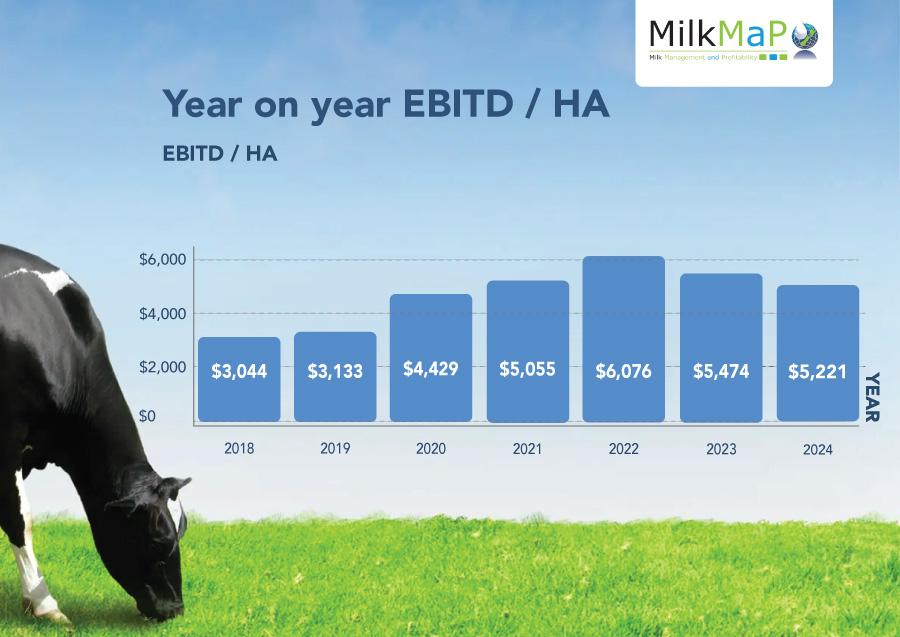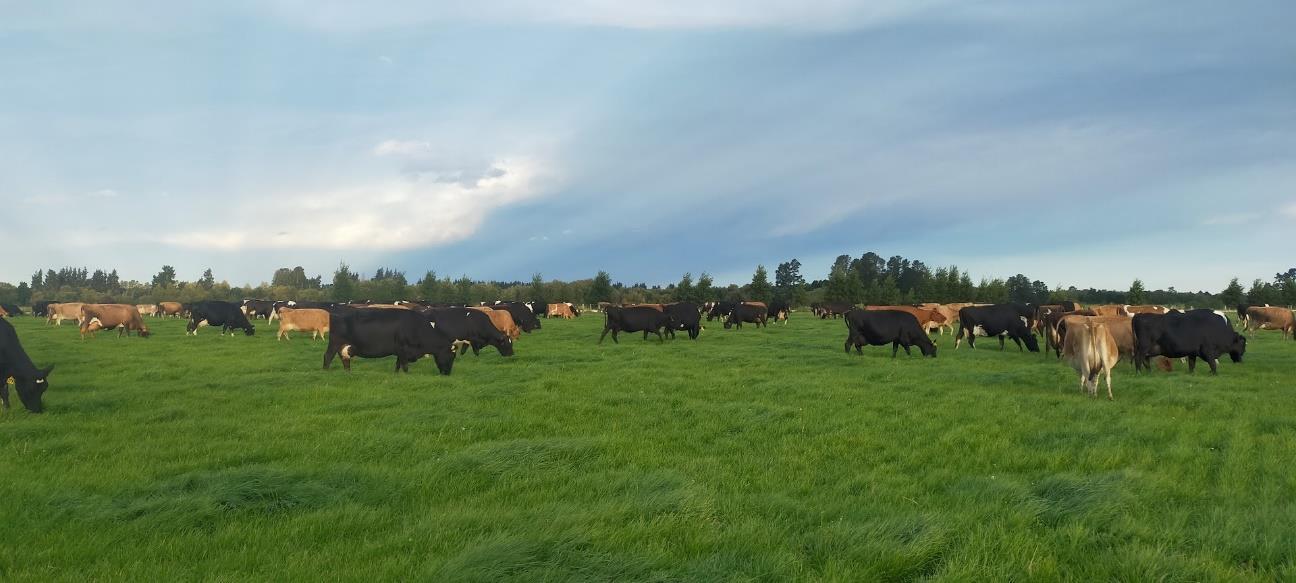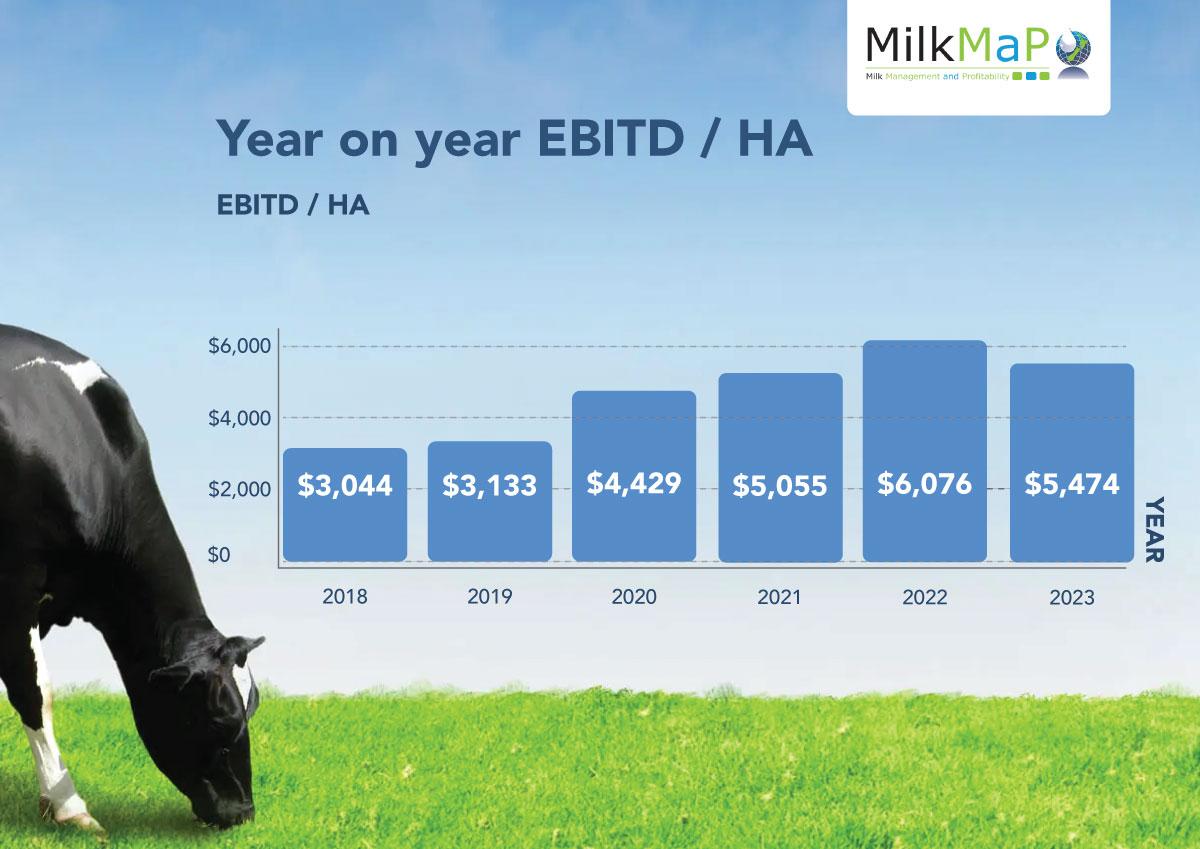Finding the sweet spot in terms of numbers, production and profit has been a fluid conversation for John and Nicola Guy until now.
The couple farms Te Waiu Ltd, just out of Waimate in the South Island, milking up to 830 registered Jerseys (Te Waiu Jerseys) through a 46-a-side herringbone dairy in a 50/50 sharemilking contract with farm owner Doug McIntyre. The farm includes 216 effective hectares (with 205ha now irrigated under a centre pivot).
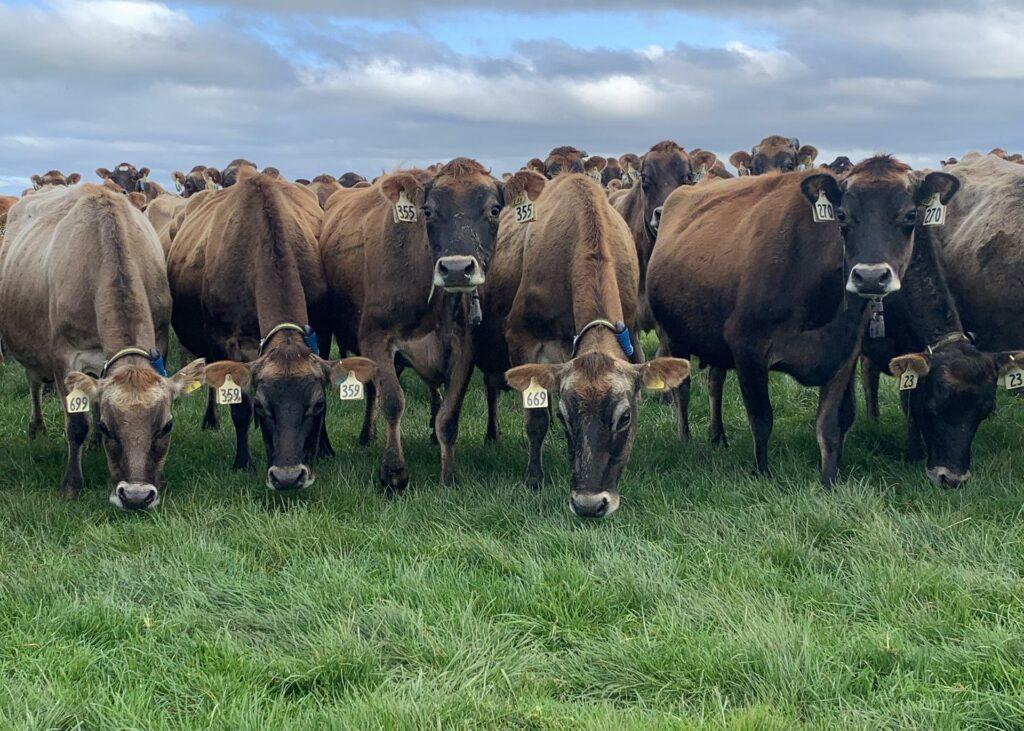
Several important improvements in recent years have impacted results – including the centre pivot addition last season.
In ticking off each improvement, the Guys have found that they’ve sat in the question of how many cows to milk long enough that the answers are becoming clear.
A couple of likeable straight shooters, who have sharemilked this property for 17 seasons, are armed with big aspirations and enough gas in the tank to get it done. They relish the challenge, and it has fed their progress. Along with their support networks, John and Nicola are closing in on exactly where they want to be within the dairy industry.
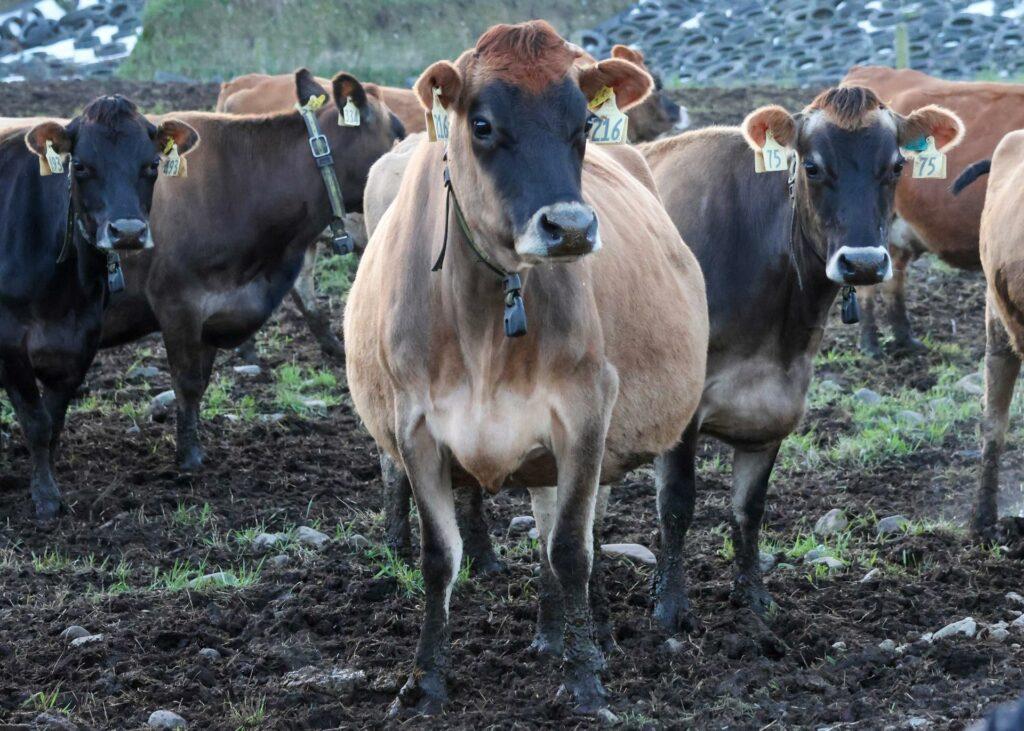
THEIR STARTING POINT
Initially, they operated two sharemilking operations. John and Nicola sharemilked Te Waiu Ltd, while John’s brother Karl and his wife Emma sharemilked a farm in the Waitaki Valley (which is owned by the four under Waitaki Ventures). The day-to-day running of both farms was separate, but they came together in the financials.
In 2017, they jointly decided to separate the two sharemilking entities. It was the beginning of some quick, tough lessons for John and Nicola: they hadn’t previously done the financials themselves, and the financials hadn’t been broken down to the point to clearly show how each individual farm was performing.
Karl and Emma’s farm is still owned by Waikati Ventures (along with some other properties in the Waimate and the Waitaki districts), while John and Nicola’s property remains under Doug McIntyre’s ownership.
Nicola says, “We knew how much income there was for this farm, but we didn’t know exactly what the expenses were, and we didn’t know exactly how much the other farm had been carrying this one.”
John expands, “When we bought the farm Karl is on, we had put a pivot on straight away, so it was doing a lot better than what we were able to do under the old borderdykes on our side. The challenge for our farm was not having consistent grass growth.
“We knew it wasn’t as good, but we didn’t quite know how bad it was.”

FLYING SOLO
There were significant team changes in that transition. In the first year, they reduced their staff, and with John and Nicola doing every milking, they saved $60,000 in wages. They added Allflex cow collars, ACRs in the dairy to ease staff pressures, and invested in automatic gate timers, so they only had to check that all the cows were at the dairy, instead of one person being taken out for 45 minutes collecting the cows. John also did an AI run for LIC for 15 years – inseminating 10,000-12,000 cows a year.
Then came the conversation with their accountant four years ago, who recommended MilkMap farm consultant Andrew Trounce to help them with the financials, animal health and big-picture farm performance.
They say that bringing Andrew on tested their theories, resulting in some lively debates around their kitchen table as they compared his input against their own views. Andrew visits 10 times a year, does financial and feed budgets, looks at the cows and the pastures, and discusses animal health.
Nicola says, “John had been doing it himself for a long time without a farm adviser; we wanted to get some new ideas, and we were also interested in a bit of budgeting.”
Andrew introduced budgeting (financial and feed), maize silage, and a lead feed (a formulated supplement fed pre-calving that includes anionic salts, calcium magnesium, grains and protein). While lead feed is uncommon enough in New Zealand, it’s a no-brainer in most dairying countries. The Guys had been struggling with a number of down cows at calving – treating up to 10 a day at the peak of calving. John acknowledges that the lead feed is more work, but Nicola confirms that they haven’t had any issues with downer cows post-calving this spring.
Tellingly, while most in their region have struggled with lower production, John and Nicola’s production continues to climb. The variables in their operation make the numbers a little harder to pin down, but there is no denying the production trajectory of their Jersey herd, which has a Breeding Worth of 265, and herd tests four times a year.
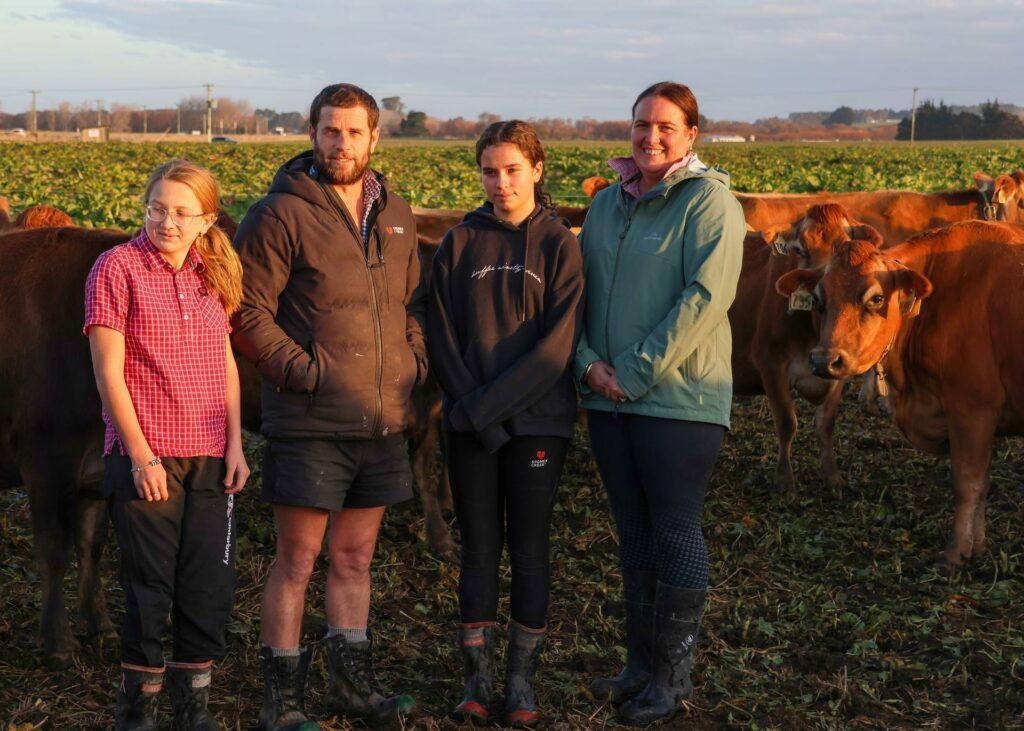
TOTAL AND PER COW PRODUCTION UP
Their herd’s average somatic cell count (SCC) in the past two seasons has been 113,000 and 133,000 respectively. It puts them in the bottom quartile at their vet for mastitis cows treated.
The couple was re-grassing 10% of the farm each year – but this season it will be closer to 20%. Their dry cows are now wintered in a feedlot on maize and grass silage. The balance of the dry cow overflow grazes kale.
2018-2019 – 335,277kg MS for the farm (409kgMS/cow) – 820 cows
2019-2020 – 324,136kg MS (395kgMS/cow) – 820 cows
2020-2021 – 341,555kg MS (432kgMS/cow) – 790 cows
2021-2022 – 343,610kg MS (452kgMS/cow) – 760 cows (less cows, more milk)
2022-2023 – 363,151kg MS (460kgMS/cow) – 790 cows (centre pivot added)
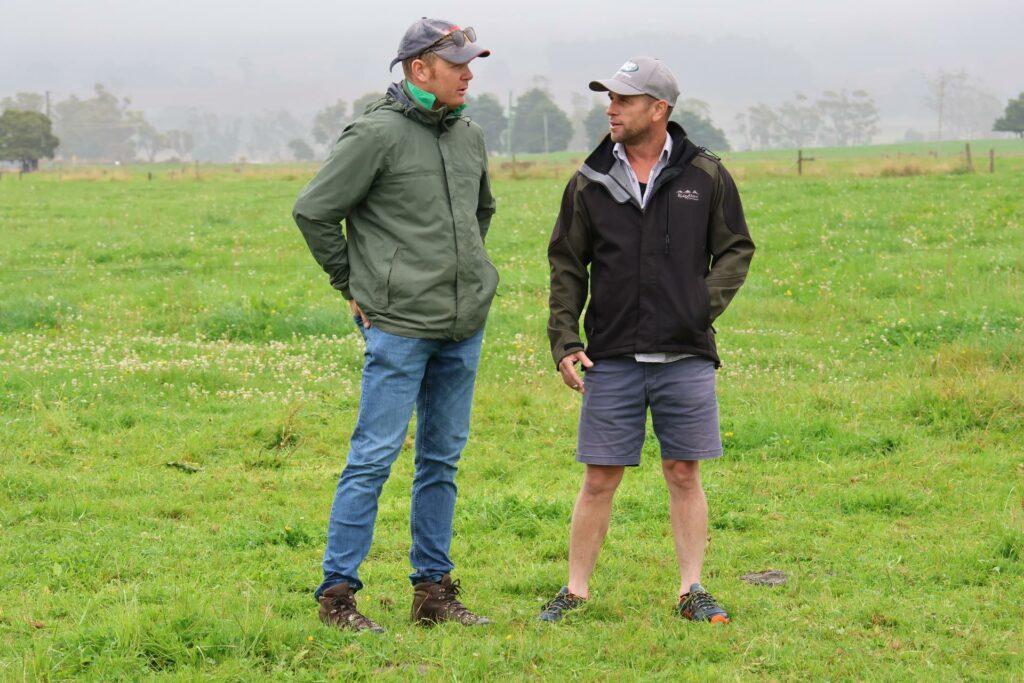
Andrew says that John and Nicola are positioned to milk the benefits of their work and diligence.
“It has always been about moving them forward, and to do that they needed to understand where they were,” Andrew says.
As John and Nicola turn their attention to this season, like everyone they are guarded about the final payout.
“What we need to do now is to control our costs,” John says. “We’re bracing for that milk price. Everyone got a bit loose with their money…but now we need to rein that in.” Nicola adds, “I hate budgets that are done on a high milk price, I think you should budget low.”
Their goal is to make money in a low payout year, while looking after their cows. Their newest variable is that they have only done one season with the centre pivot. But they can already see its value, so they have pushed through on numbers.
John says, “We went from 790 cows last year to calving 845 cows this year. I wanted to have less cows this season, but the pivot has come into the mix, and we have more grass. We’re just seeing how it goes.”
They are feeding 1.3 tonne per cow per year of supplement, including grass silage – and ideally John would like to bring that down.
Quantifying their operation from every angle has allowed them to prioritise what is important to them, and to let go what isn’t. An example is that the whole herd is vaccinated with Rotavac.
Nicola says, “Everyone asks me why we do it. I always say, ‘Have you had Rotavirus in your calves?’ It’s soul destroying. We had it early on in our time here and I still vividly remember it. I’m not going through that again.”
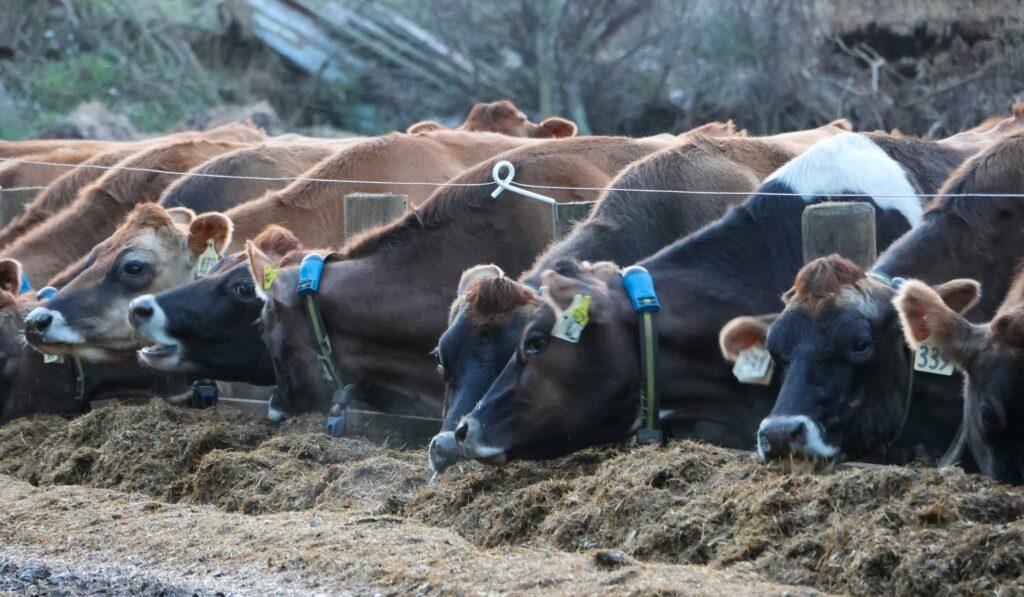
HARD YARDS DONE
Te Waiu Ltd has done the hard yards, refined the variables and is close to settling on its ideal position.
The Guys continue to question, push hard and advocate for dairy.
Andrew says, “We’ve helped to provide that base around cashflow budgets, forecasting, and we’ve talked about a lot of scenario planning, and they can now see where they are going.
“I think there is so much personal enjoyment in their story. They work as a good duo, and they held in there a long time.
“Now that all this hard work has been done, they will reap the rewards, because they know that farm, they’ve bred those cows, they’re working on that pedigree side, the physical aspects of the farm has been greatly improved with all the re-grassing, the centre pivot and the cow collars.
“They’re ready to go forward in leaps and bounds from an efficiency and financial performance aspect.”
